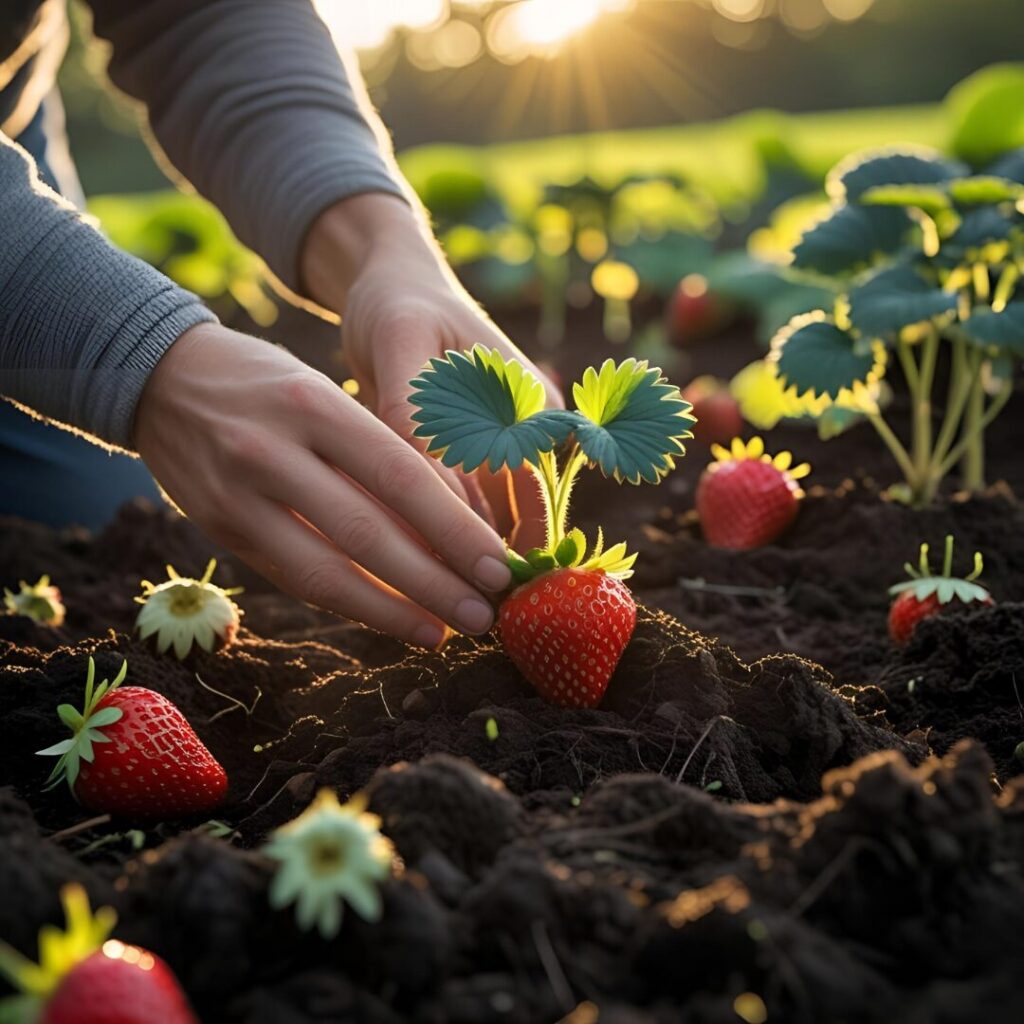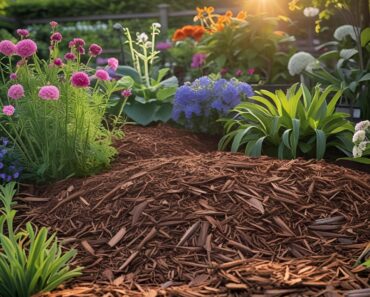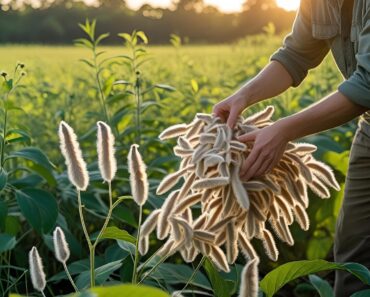Bare-root strawberries are dormant plants shipped without soil, typically bundled together. This method is cost-effective and allows you to buy large quantities for planting a patch. Bare-root plants often establish more quickly than potted ones, developing strong root systems that support robust growth and fruiting157.
The best time to plant bare-root strawberries is early spring, as soon as the soil is workable and before the plants break dormancy. In most regions, this means March or April, but timing can vary with climate. Early planting gives roots time to establish before the growing season begins13457.
If you receive your plants before the last frost, you can keep them in a cool, dark place for a few days, but don’t delay planting—bare roots dry out quickly and their survival rate drops if left unplanted for too long35.
-
: Strawberries need at least 6–8 hours of direct sun daily. A sunny, sheltered spot is ideal147.
-
: Well-drained, fertile soil is crucial. Strawberries dislike soggy roots and will rot in wet conditions. Raised beds or mounds are excellent for drainage.
-
: Work 2–3 inches of well-rotted compost or manure into the top 6 inches of soil to provide nutrients for several years245. Remove all weeds before planting, as strawberries compete poorly with them.
-
: Open your bundle and separate the plants. Remove any dried leaves or damaged roots16.
-
: Place the roots in a bucket of lukewarm water for 1–2 hours to rehydrate them. Do not soak the crown (the point where roots meet the stem), as this can cause rot1356.
-
: If roots are excessively long (over 6 inches), trim them back to 4–5 inches. This prevents crowding and encourages new root growth12356.
-
: Plant strawberries 8–12 inches apart in rows, with rows 18–24 inches apart. This spacing allows for good air flow and room for runners26.
-
: Dig a hole deep and wide enough to accommodate the roots without bending them. The crown should sit at soil level—planting too deep can cause rot, too shallow and roots may dry out124567.
-
: Use a trowel to make a hole large enough for the roots to spread out naturally.
-
: Place the plant in the hole, spreading the roots downward and outward. Do not twist or bunch the roots1234567.
-
: The crown (where roots meet stem) must be level with the soil surface—neither buried nor exposed124567.
-
: Gently fill in the soil around the roots, firming lightly to eliminate air pockets.
-
: Water each plant well to settle the soil and ensure good root-to-soil contact124567.
-
: Apply a layer of straw or mulch to retain moisture, suppress weeds, and keep fruit clean as it ripens4.
-
Use a 3-liter (or larger) pot for each plant, ensuring drainage holes at the bottom5.
-
Fill with rich, organic potting mix, and plant as described above.
-
Container-grown strawberries need more frequent watering than those in the ground—check daily in warm weather5.
-
Keep the soil consistently moist, especially during the first few weeks as roots establish456.
-
Water in the morning to allow foliage to dry, reducing the risk of disease4.
-
Once new growth appears, feed with a balanced organic fertilizer or liquid feed such as fish emulsion24.
-
In subsequent years, top-dress with compost or a general-purpose fertilizer each spring4.
-
Weed regularly, being careful not to disturb shallow strawberry roots4.
-
Mulch with straw, pine needles, or shredded bark to conserve moisture, suppress weeds, and keep fruit off the soil4.
-
Protect ripening fruit from birds with netting as soon as berries begin to color4.
Strawberry plants send out runners (long stems with baby plants) after fruiting. You can:
-
: Allow runners to root in place to expand your patch.
-
: Sink small pots of compost into the bed and peg runners into them. Once rooted, sever from the parent plant and transplant as desired45.
-
: Trim off unwanted runners to focus the plant’s energy on fruit production4.
-
: Caused by planting too deep or poor drainage. Always keep the crown at soil level and ensure good drainage124567.
-
: May result from planting too late, poor soil, or dry roots. Ensure early planting, rich soil, and thorough root hydration345.
-
: Birds, slugs, and vine weevils are common. Use netting for birds, mulch for slugs, and nematodes for vine weevils4.
-
: Strawberries are prone to mold and mildew. Water in the morning, mulch, and keep beds weed-free for good air circulation4.
-
: June-bearing strawberries typically do not produce fruit their first year, as energy is focused on root and runner development36.
-
: Pinch off flowers in the first season to encourage strong root systems and better yields in following years6.
-
: May produce a small fall crop in the first year, but yields increase in subsequent years35.
-
: Pick strawberries when fully red, pinching through the stalk to avoid bruising4.
-
: Only wash berries before eating to prevent mold.
-
: After fruiting, remove old leaves and thin crowded plants to rejuvenate the patch for next year.
Yes, as long as the ground is workable and not frozen. If hard freezes are still likely, you can plant in containers and move them outdoors once temperatures stabilize2.
Dormant bare-root plants often look dry or lifeless but will revive after soaking and planting. If there’s no growth after a month, they may not have survived2.
A well-maintained patch will produce for 3–5 years. After that, it’s best to start a new patch with runners or fresh plants.
Conclusion
Planting a strawberry patch from bare roots is simple and highly rewarding. By choosing a sunny, well-drained site, preparing your soil, handling bare roots with care, and planting at the correct depth, you set the stage for years of sweet, homegrown strawberries. With attention to watering, feeding, mulching, and pest management, your patch will thrive and expand, providing fresh fruit and the satisfaction of a flourishing garden. Happy planting!
Citations:
- https://www.starkbros.com/growing-guide/how-to-grow/berry-plants/strawberry-plants/planting
- https://strawberryplants.org/guide-planting-bare-root-strawberry-plants/
- https://ourstoneyacres.com/planting-bare-root-strawberries-2
- https://www.fruithillfarm.com/info/2024/03/how-to-grow-bare-root-strawberries/
- https://www.gardenersdream.co.uk/blogs/gardeners-dream-blog/a-guide-to-bare-root-strawberries
- https://www.thespruce.com/how-to-plant-strawberry-bare-roots-6260140
- https://www.rogersgardens.com/blogs/current-news-events/bare-root-plants-the-best-way-to-grow-your-own-garden-fresh-strawberries
- https://www.youtube.com/watch?v=IsoLRx_39bQ
- https://www.youtube.com/watch?v=Ud7oajKn8Yo
- https://www.reddit.com/r/vegetablegardening/comments/115mkzv/when_to_plant_bare_root_strawberries/







